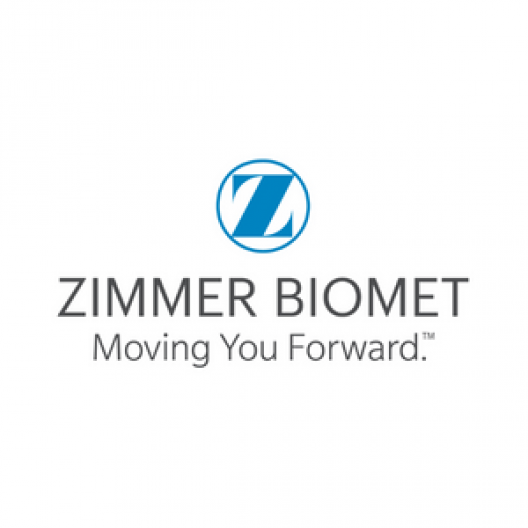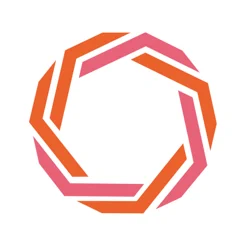
How Volunteering at ERGs Can Help to Land Top Roles in HR/DE&I
Interviews
Zimmer Biomet’s James Cheng talks to myGwork’s Pepi Sappal about how his ERG volunteering experience paved the way to senior HR and DE&I leadership roles across various industries and companies.

James Cheng is testament to how volunteering for employee resource ERG groups alongside his day job, helped him to secure a role he’s passionate about. Today he is the Global Senior Director and Head of Diversity, Equity, and Inclusion (DE&I) at Zimmer Biomet. Prior to this, he held roles as Global Director of Inclusion & Diversity and Talent Acquisition at Gilead Sciences Inc and HR Director of Global Inclusion & Diversity at Cargill Inc.
James’ foray into the world of work started early. He began working at the age of eight, where he helped in the family restaurant business, taking orders and serving customers. His parents were not only his caregivers but also his first bosses. That experience and work ethic equipped him with the valuable skills to secure several jobs in various roles from the age of 16, when he left home to pursue college.
One of his employers was Best Buy Co., where he worked across several roles and professions, during his 17-year stint there. As a gay Asian American, he also got involved with ERGs that charted a new trajectory for him outside his technical and business roles. By volunteering for and co-chairing multiple ERGs, including those for veterans, LGBTQ+ professionals, and Asian Pacific Islanders, James found communities that resonated with his experiences and values. But little did he know then that this volunteering would lay the groundwork for his future leadership in the DE&I space.
"Volunteering in my own time allowed me to go beyond my day job, attend conferences, and delve into the world of diversity, equity, and inclusion," James reflects. “When an opening came up for a position in D&I, it was one of my leaders who encouraged me to apply. ‘Why don't you apply for it as you spend so much of your personal time doing it?’, they told me, at a time when I didn't even know it was a profession back in 2010.”
Strengthening the role of ERGs
Of course, his diverse background in IT and business, coupled with leadership experiences across departments, also proved instrumental in his transition into the DE&I space. Strengthening the role of ERGs has remained a constant in James' DE&I strategy across his career spanning several sectors, including electronic, retail, supply chain, commodities, pharmaceuticals and medtech.
“Zimmer Biomet has invested over a million dollars to employee resource groups,” shares James. “My leadership teams across all ERG groups come together every quarter to ensure that their vision is aligned to our overall DE&I strategy. Each ERG owns their budget and submits a business plan, measure progress against set KPIs, and directly contribute to the DE&I strategy, which is aligned to the company’s mission.”
James encourages and requires the company’s ERGs to work with each other. They come up with ideas together and collaborate: “For example, one of our ERGs – Empower – which focuses on disability and caregivers, recently partnered with our LGBTQ+ networking group to share learning about what it’s like to be part of both communities.”

Amplifying underrepresented voices
He also emphasizes the essential role that ERGs play in amplifying underrepresented voices while engaging allies for wider organizational learning: “On the one hand, ERGs need to create a safe space, where the underrepresented and marginalized community can have a voice when most of the time their voices are drowned out. But on the other, they need to provide learning for the wider organization and allies. So, it's a fine balancing act.”
Thanks to his successful experiences as an ERG co-chair of various groups, he values the work carried out by network leaders, who go above and beyond their day job to create workplace inclusion, just as he did. “We look at these roles, often done voluntarily, as extended assignments which form part of everyone’s career progression and development at Zimmer Biomet, providing opportunities to learn new skills and network with senior leaders in the organization, for upward or sideway moves to help retain talent.”
The impact of ERGs also extends beyond the workplace. James cites instances where ERGs have facilitated innovation, such as new product lines or addressing healthcare disparities in specific communities. “When I was at Cargill, for example, we were able to leverage our employee resource groups, to innovate, by bringing together a diverse group of people to share their life stories, experiences, and culture, which led to new product lines,” shared James.
“Similarly, when I was at Gilead Sciences, we gathered valuable new information through the ERG – that we never really considered before – which was the fact that in the southern part of the U.S., HIV was becoming more prevalent in specific communities. One of the biggest challenges for us was the distrust of the medical community. So, we completely revamped our approach to connecting with that community with a more innovative solution.”
However, “before engaging to sell to a specific culture or group, you need to ensure that communication is authentic and intentional," James notes. “That requires actively immersing yourself in a culture for deep learning. He also emphasizes proactive and respectful engagement with communities to drive meaningful change.”

Developing partnerships with relevant communities and charities
Better partnerships with ERGs and community-related partners/charities can help organizations find solutions to any problems they encounter too, James highlights. “By partnering up with relevant communities, for example, in the wake of any backlash as seen this summer during Pride, organizations can take strategic action with advice from affected communities, instead of many of the reactionary measures we saw that can alienate a group, which ultimately can damage your brand.”
It's also important to be mindful of how your organization’s brand is showing up and being perceived by the various communities in terms of philanthropy and giving back. “We work with diverse suppliers across all groups from Asian/Black to LGBTQ+ owned businesses to not only be more inclusive but also help small minority-business owners survive and thrive,” shares James. “In my experience, this can result in better market penetration in areas that you traditionally didn't have access to. Of course, that takes knowledge and understanding of the communities that you want to serve.”
Focus on integration
His advice to DE&I leaders is to focus on ‘integration’. “Do not let DE&I become a silo as it’s something that needs to be integrated into every part of your organization if you want to achieve success. DE&I strategy should permeate all facets of an organization, aligning with talent acquisition, retention, development, and business innovation strategies. Investing in people is key. Then you need good systems, governance, and business integration to make it sustainable," James emphasizes.
His personal journey, representing multiple intersecting identities, drives James’ belief in valuing and connecting diverse communities: “As a gay Asian American veteran, with an invisible disability from a socioeconomically challenged background, I'm a living embodiment of a leader with many intersectionalities, who focuses on creating belonging and inclusion through commonality and valuing differences. When this becomes second nature, it’s fluid and magical.”
That’s a rare, but invaluable, skill sought after by many companies – especially in leaders.
James Cheng shares more on his lived experience in Attitude. Click here to read.

